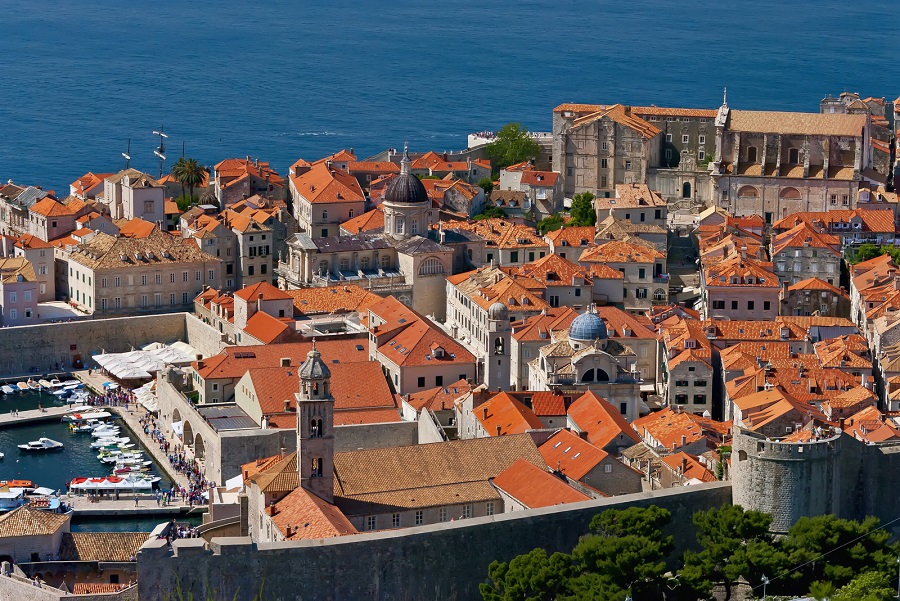Le tourisme croate pour le marché français : entretien avec la guide touristique spécialiste Ana Mršić
28 juillet, 2021 - Le marché français en Croatie est à la hausse. Le point de vue de la propriétaire de l'agence de voyages spécialisée Turquoise Travel, Ana Mršić.
1. Parlez-nous un peu du marché touristique français en Croatie. Est-ce qu'il grandit ?
Les Français ont depuis toujours voyagé en Croatie et aime la Croatie. Après la guerre des années 1990 les Français ont été les premiers qui sont venus dans les premiers hôtels restaurés et c’était ainsi dans cette période de pandémie. Les Français aiment les beautés naturelles et culturelles, ils apprécient beaucoup notre héritage historique et rien ne peut les arrêter de venir en Croatie.
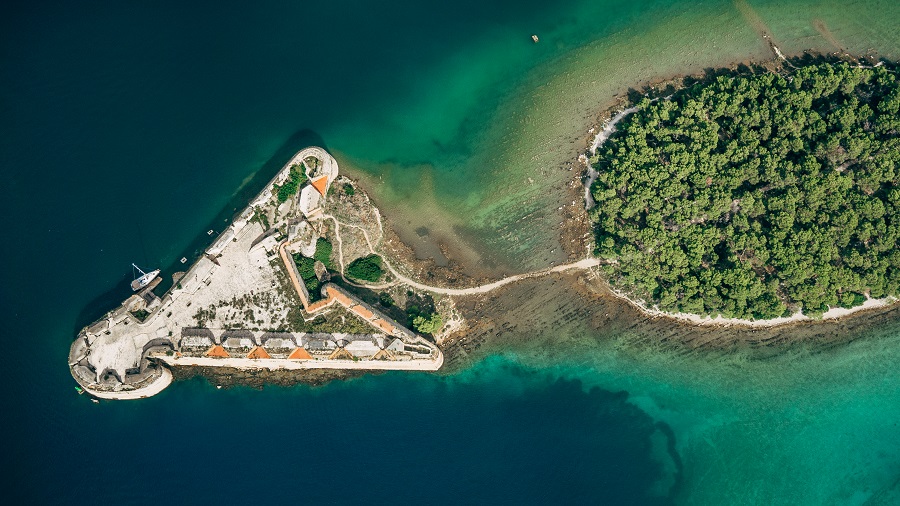
2. Quelles sont les destinations les plus prisées des touristes français et quelles sont les choses qui les intéressent le plus ?
Les touristes français adorent notre côte, la mer et les îles. Ils sont intéressés par l’aspect culturel et historique, ils souhaitent découvrir le riche passé de notre pays mais aussi savoir comment nous vivons aujourd’hui. Après les monuments historiques, les musées et les remparts, les Français adorent passer les vacances actives, dans la nature et au bord de la mer. Ils sont très curieux et préfèrent les endroits hors des sentiers battus sans foule de touristes et avec un aspect authentique et typiquement local. Ils sont connus comme les gourmands donc la gastronomie et les bons vins sont incontournables dans la planification de leur itinéraire.
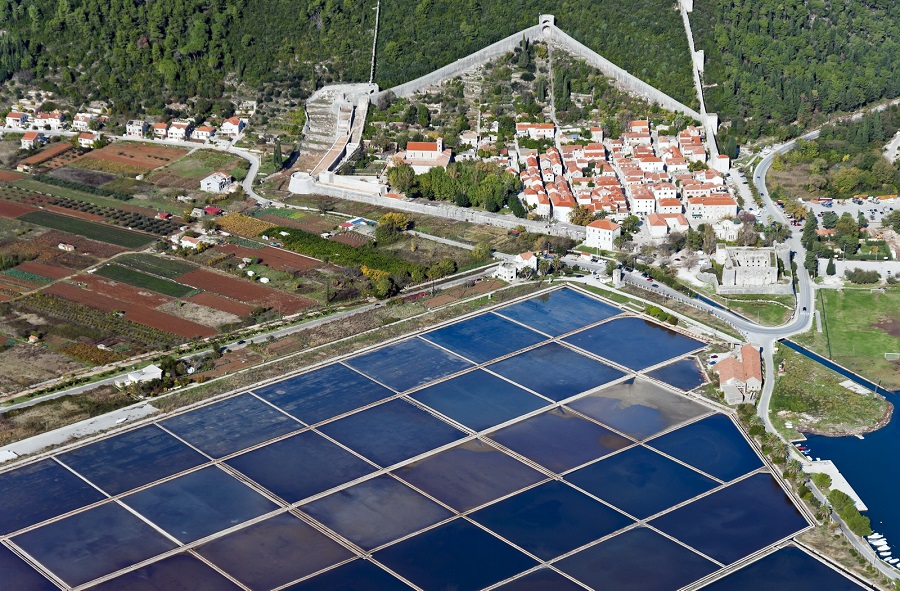
3. Et les vols ? Comment sont les liaisons directes entre la France et les aéroports croates ?
Cette année il y a les vols directs qui relient Dubrovnik avec Paris (EasyJet, Air France, Croatia Airlines), Lyon (EasyJet), Nantes (EasyJet et Transavia), Marseille et Toulouse (Volotea). Puis il y a des arrivées sur l’aéroport de Split au départ de Paris (Transavia, EasyJet, Air France), au départ de Lyon (Croatia Airlines et EasyJet) et puis Volotea opère les vols au départ de Bordeaux, Marseille, Lyon et Nantes. Croatia Airlines et Air France opèrent les vols au départ de Paris sur l’aéroport de Zagreb.
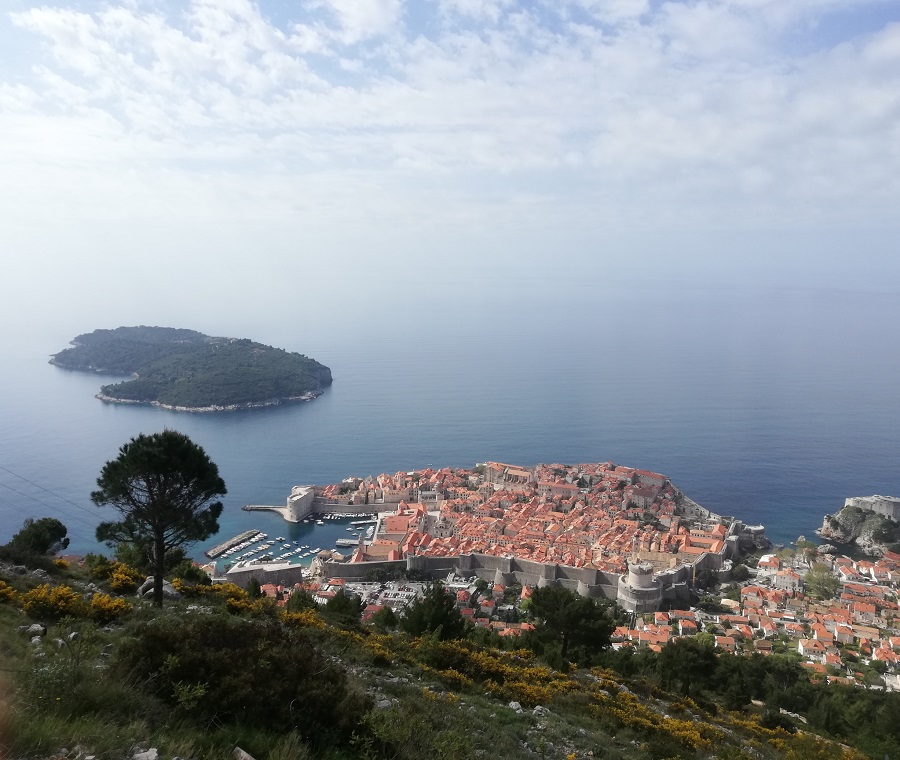
4. Parlez-nous de votre agence, spécialisée sur le marché français. Quand avez-vous commencé, et quel est votre spécialisation (à part le fait que vous êtes francophone) ?
Comme turquoise est ma couleur préférée et je suis amatrice passionnée de ma ville natale et de mon pays, après plus de 15 ans de travail dans le tourisme, j’ai décidé de monter ma propre agence de voyages afin de montrer le meilleur de la Croatie et ses pays voisins aux voyageurs du monde entier. Mon but est de montrer Dubrovnik et Croatie aux visiteurs d’une autre perspective, loin de destinations de tourisme de masse et les aider à créer leurs itinéraires personnalisés hors sentiers battus. Mon équipe et moi, nous connaissons les meilleurs sites locaux, points d’intérêts peu connus, criques de couleur bleu turquoise, plages éloignées, jolis couchers de soleil et beaucoup plus. Nous leur raconterons l’histoire sur le présent et le passé de ce pays merveilleux de 1000 îles mais aussi sur la campagne magnifique et sur la partie continentale moins connue.
Nous avons conseils pour endroits gastronomiques, meilleurs vins et présentations de la cuisine locale ainsi que cours de cuisine. Chaque circuit ou itinéraire peut être adapté aux souhaits spécifiques et aux préférences des voyageurs. Mon équipe professionnelle des agents ensemble avec un bon réseau de fournisseurs locaux (compagnies de transport, guides, hôtels et restaurants) assureront qu’ils passent des vacances inoubliables et qu’ils portent toujours leurs souvenirs de couleur turquoise.
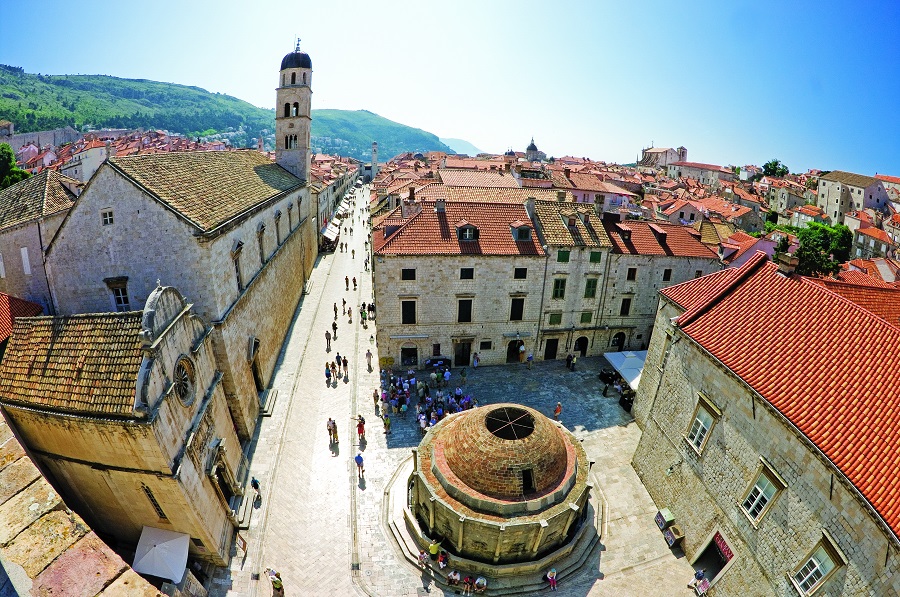
5. La concurrence pour les agences anglophones est intense. Quelle est la compétitivité du marché français des agences en Croatie ?
Sur le marché français la concurrence est moins forte surtout quand il s’agit des petites agences où le touriste n’est pas un nombre mais un ami. Nous nous consacrons à chaque dossier, à chaque voyageur potentiel et nous donnons notre mieux pour lui fournir un itinéraire spécial, un devis adapté à son budget et l’assistance 24/7 quand ils sont sur place. Ce type d’agence n’est pas nombreux donc nous avons beaucoup de clients français qui nous font confiance et qui rentrent chez eux contents avec les services fournis et surtout avec l’expérience vécue sur les conseils d’un local.
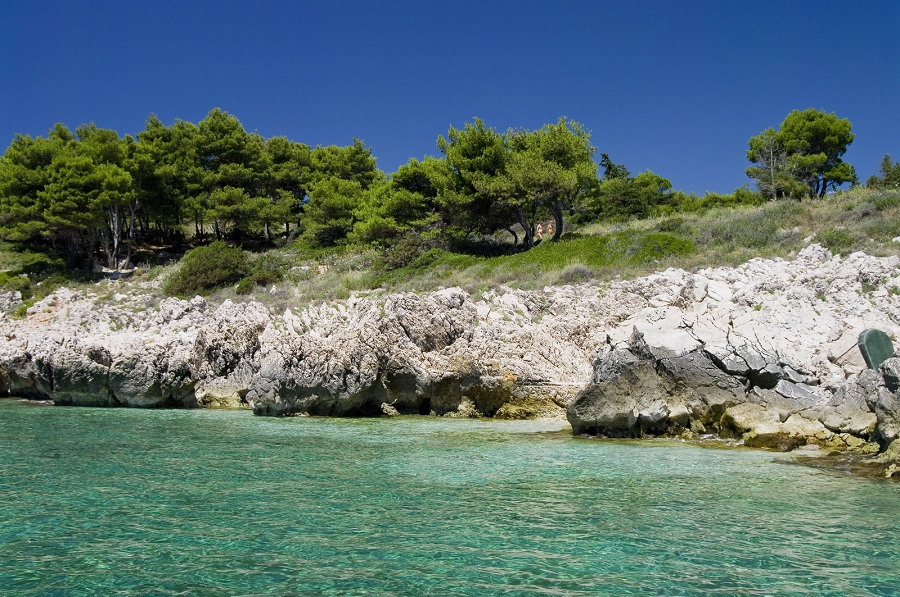
6. Quelle est votre opinion sur la qualité des information touristiques disponibles sur la Croatie en français ?
Je suis en contact quotidien avec les potentiels touristes mais aussi avec ceux qui sont sur place et qui sont à la recherche des informations pratiques qu’ils sont essentiels pour préparer leur voyage. C’est vrai qu’il est difficile de trouver les informations surtout dans le contexte de la pandémie Covid-19, quelles sont les conditions d’entrée, s’il faut avoir le test, si ou, lequel antigénique ou PCR etc. Après pour se déplacer à l’intérieur du pays, quelles sont les liaisons de bus, train, ferry. Ce n’est pas évident et il faut investir beaucoup de temps. C’est pour cela que Total Croatia a fait un travail énorme pour recueillir toutes les informations en une page et ce qu’il faut souligner que les informations sont constamment mises à jour.
7. Et enfin, votre recommandation personnelle. Quelle serait votre recommandation pour des vacances parfaites pour les touristes français en Croatie ?
La Croatie vous enchantera par sa diversité, par un large éventail des activités et des jolis endroits à visiter. Mon choix serait de visiter les villes historiques Dubrovnik, Split, Trogir, Šibenik et Zadar, ne pas manquer des îles (la Croatie est le pays de plus de 1000 îles et vous ne serez pas déçus n’importe quelle île vous choisissez), mes îles préférées sont Korčula et Hvar. Mes grands-parents étant d’origine de Pelješac, je vous invite à découvrir la deuxième presqu’île croate (après l’Istrie) parce que là-bas vous trouverez la nature sauvage, les plages qui font rêver et l’excellent vin. Et puis si vous avez déjà visité la côte, il y a plein de curiosités dans les régions moins visitées comme la région de Zagreb, Hrvatsko zagorje et Slavonie. Je dis toujours que la Croatie a son bleu (mer, rivières, lacs) et son vert (montagnes, forêts, champs) et entre les deux l’argent de ses anciennes villes. La chaleur des gens et les beautés qui nous entourent sont la garantie que vous passerez les vacances inoubliables.
Lien sur notre site web : www.turquoisetravel.net

Finding Zagreb: From Zero to Hooked on Croatia's Capital City
July 29, 2021 - A few weeks ago, all that Veronica Mulhall knew about Zagreb was that it was the Croatian capital. After several weeks as the first Zagreb Digital Nomad Ambassador, her perspective has completely changed.
As if it was always meant to be, I have been walking around Zagreb the last few weeks completely in love with the city. The beautiful streets, buildings, history, art, culture, and people have made it an endless exploration that has mixed perfectly well with the meetings, management, and (endless) emails that come with my work-remote lifestyle.

The catch? I have a secret. What may be surprising is that just a few weeks earlier I hadn’t thought of visiting Zagreb. And, I was already in Croatia as a digital nomad. It was only barely on my radar as Croatia’s capital. No one told me how green the city was, the endless options of great cafes and restaurants. Instead, I thought the coast was Croatia’s main attraction.

When I planned my trip to Croatia, it was with the idea that I would work remotely for the summer months and slowly make my way up the coastline. I arrived in Dubrovnik to find that it was as picturesque as people describe it to be. The fortress walls meeting the seaside and the cobblestone alleyways hiding quaint shops made the city perfect for your average tourist, but I found it hard to balance work.
In an effort to ‘settle’ and become more comfortable, I searched online for coworking spaces.I quickly found the Saltwater Nomads website and at the top there was a banner promoting the Zagreb ambassador program.
The advertisement caught my attention for two reasons: 1. I had plans to visit Dubrovnik, Spilt, Makarska, Hvar, Trogir, Sibenik, Zadar, Krka national park and Plitvice Lakes national park, why had I overlooked Zagreb, the country’s capital? And 2. I have missed the capital on other trips and later regretted it. It had me thinking, what did I not know about Zagreb?
A blackhole of and hours of googling later, I found that the city spoke to me by highlighting things that I care about. Zagreb has easy access to nature, and yet, new events around the city every night.Someone described it as Seattle in the 90s, another blogger talked about the layers of history. I was suddenly determined to find out for myself, so I took a chance and applied to the Zagreb ambassador program.
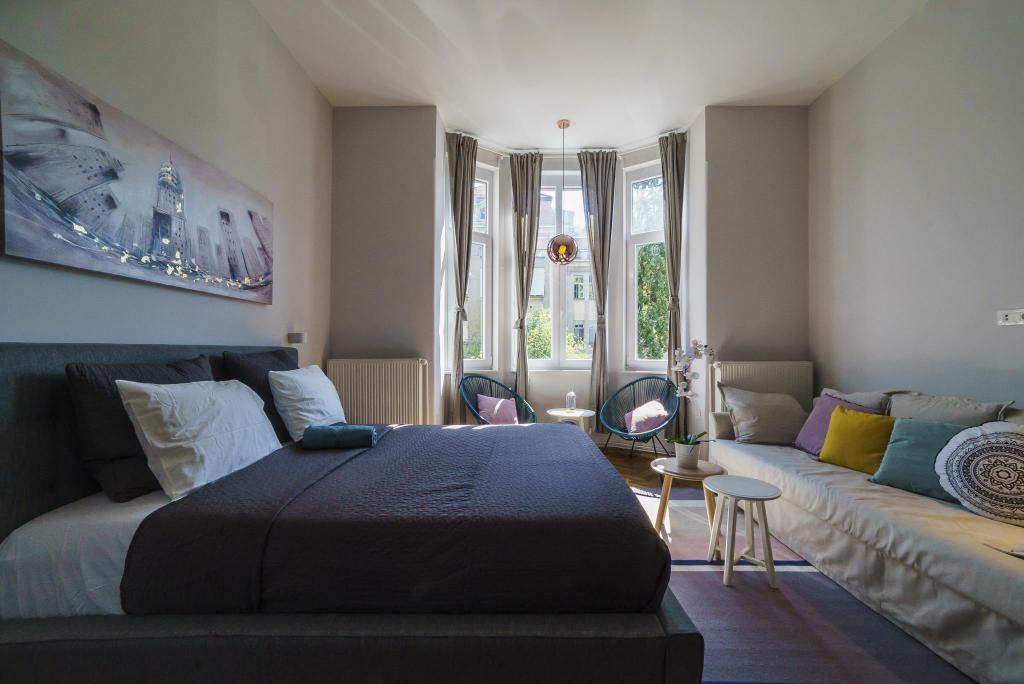
(Doma Zagreb Aparthotel - 4-star luxury in central Zagreb)
While I was excited when I found out I had the opportunity to be the first Zagreb Digital Nomad Ambassador, I arrived in Zagreb a bit nervous. I wondered, “What if I miss the coast?” and didn’t know if there would be enough to do for the month. Most blogs and tourism guides discuss what you can do in Zagreb for 24 or 72 hours. As a digital nomad, I was wondering what I would do after that.
It is the things are are not in the tourist guides or blogs that makes Zagreb perfect for digital nomads, the great places to work (when I can bear to leave my bay window at Doma Zagreb Aparthotel), taking work calls for peaceful parks such as Maksimir and Art Park, quaint cafes, and endless restaurants. The vibe of the city is young and fresh and there are events almost every evening that I have found simply by leaving the apartment and walking around.
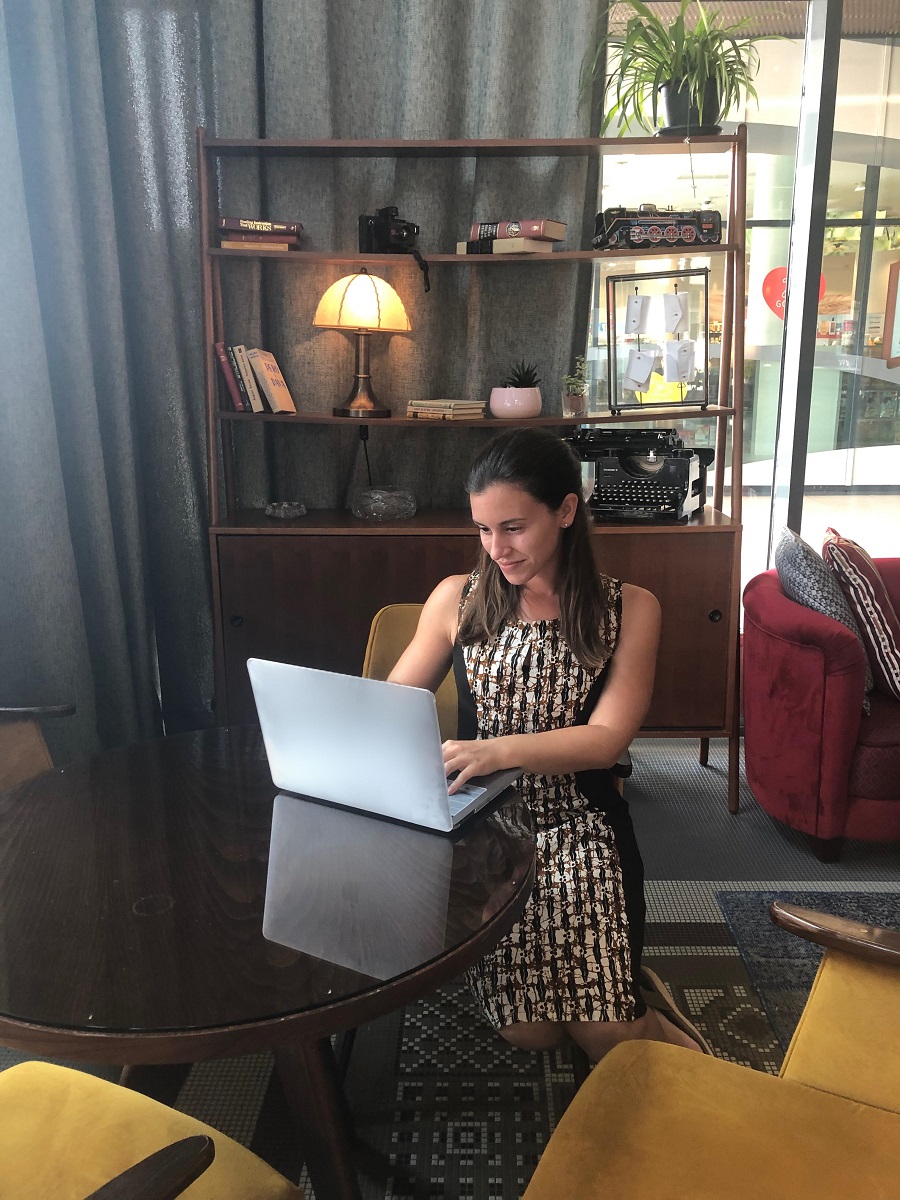
It turns out the number one thing I fell in love with in Zagreb is the people. Adel, the owner of the Doma Aparthotel where I am staying, invited me to dinner, and I immediately felt welcomed to the city. As I met the other partners from the Zagreb Ambassador Project, Saltwater Nomads, Total Croatia News, Digital Nomad Association Croatia and the Zagreb Tourism Board, it became clear that this was one of those cities I was not going to want to leave. I quickly found it normal to meet someone for a coffee for a few hours and ask a stranger for directions. Each interaction has created a constellation, a community, making the nomadic world in Zagreb feel a little more like home.
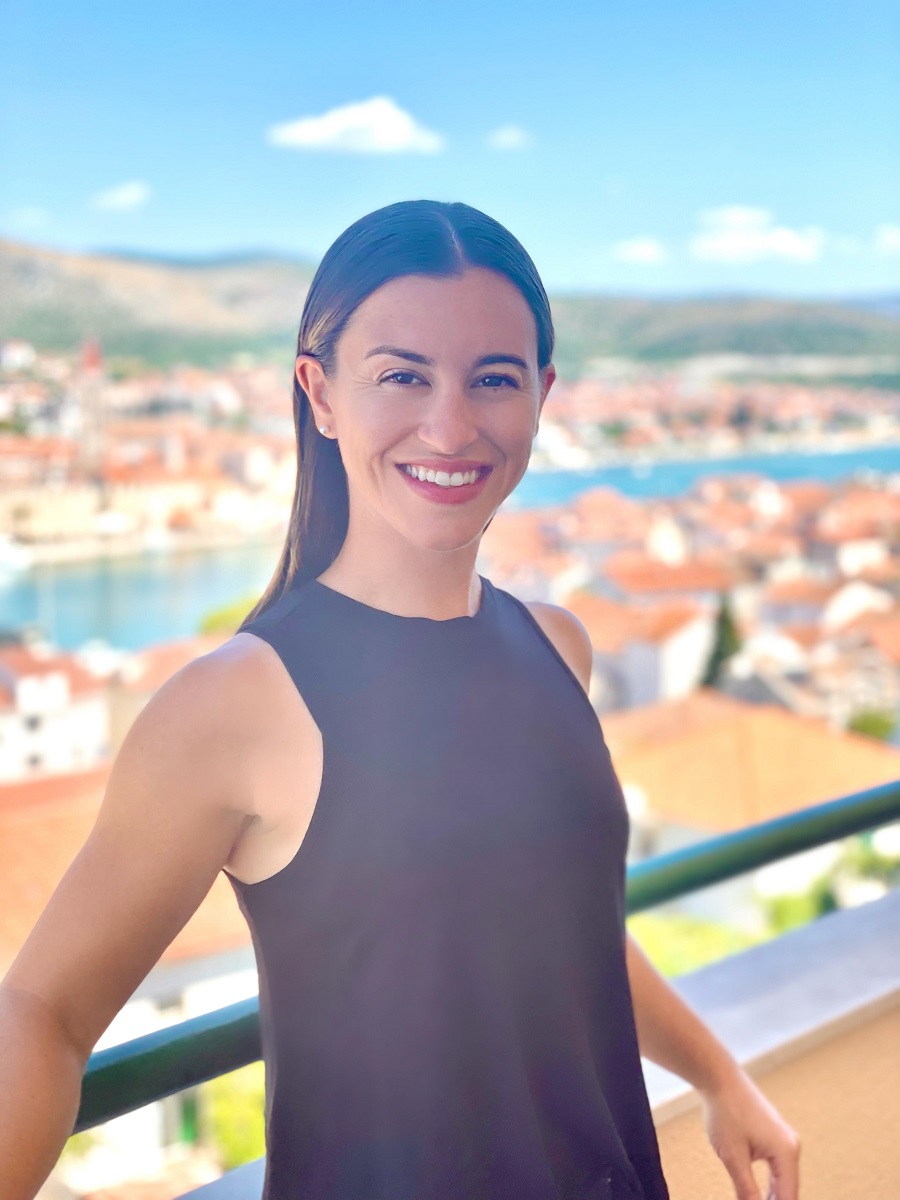
Do you want to be a Zagreb Digital Nomad Ambassador? Learn how here.
For more news and features on digital nomads in Croatia, visit the dedicated TCN section.
Dinamo Moves into Champions League 3rd Qualifying Round After Defeating Omonia
July 28, 2021 - Dinamo Zagreb won a spot in the Champions League 3rd qualifying round after defeating Omonia 1:0 in the return match in Nicosia, thus confirming their 2:0 victory from the first match at Maksimir.
Luka Menalo scored the deciding goal in the 79th minute. Dinamo arrived in Cyprus with a two-goal advantage and not only managed to defend the advantage but also recorded a new victory, reports HRT.
In the next round, Dinamo will play against the Polish club Legia. If they win, Dinamo would be left with another obstacle on the way to the Champions League, but also a secured spot in the Europa League. Namely, a defeat in the last qualifying round of the Champions League ensures they'll compete in one of the Europa League groups.
If they lose to Legia, they would play in the Europa League play-offs. Winning that round means a place in the Europa League, and a defeat in the Europa League play-offs, in turn, guarantees a place in the Conference League group.
The first match against Legia will be played in Zagreb on August 4, and the return match in Poland will take place on August 10.
Dinamo traveled to Cyprus with two consecutive victories, against Cyprus in Zagreb and then against Hrvatski Dragovoljac (4:0), which improved the impression of the Blues after losing the opening of the Croatian championship to Slaven Belupo.
The coach of the Croatian champion Damir Krznar is satisfied with moving into the next round of the competition.
"The goal has been met, and that is the most important thing. It was a tough match in which our toughest opponent was the pitch. Understandably, we had problems and difficulties. In the second half, when the field became a bit wetter, our performance was better. I am delighted with the smart and wise game and the result," said the Dinamo coach after the victory over Omonia.
To follow the latest sports news in Croatia, follow TCN's dedicated page.
To learn more about sport in Croatia, CLICK HERE.
Olympic Games: Čilić and Dodig into Doubles Semifinals in Tokyo!
July 28, 2021 - Croatia's Marin Čilić and Ivan Dodig have advanced to the tennis doubles semifinals in Tokyo!
Marin Čilić and Ivan Dodig defeated Great Britan's Andy Murray / Joe Salisbury 4-6, 7-6 (2), 10-7 after two hours and 15 minutes of play at the Ariaki Center on Wednesday.
Čilić and Dodig 6:4 lost in the first, and after winning the first, the British duo broke in the second as well. Murray and Salisbury looked better on the court and led 4:2, but in the eighth game, the Croatian side broke and returned to the game.
In the tie-break of the second set, Čilić and Dodig played excellently and won the third set with three mini-breaks. Čilić and Dodig used the second match point to win the match and advance to the semifinals.
In the semifinals, Čilić and Dodig will play against New Zealand's Michael Venus and Marcus Daniell. They knocked out the favored Colombian side, Cabal and Farah.
Two Croatian doubles teams are still playing today - Nikola Mektić and Mate Pavić, and Ivan Dodig and Darija Jurak in mixed doubles.
If Mektić and Pavić win their match, Croatia will certainly have at least a bronze medal in tennis, because, in case of defeat, both Croatian teams would meet in the semifinal in the bronze medal fight. Mektić and Pavić play against Japan's McLachlan and Nishikori.
To follow the latest sports news in Croatia, follow TCN's dedicated page.
To learn more about sport in Croatia, CLICK HERE.
Sinković Brothers Advance to Olympic Rowing Final in Tokyo!
July 28, 2021 - Brothers Martin and Valent Sinković have done it again! The celebrated Croatian rowing team has a chance to fight for a medal in the Olympic rowing final in Tokyo on Thursday.
Brothers Martin and Valent Sinković advanced to the final of coxless pairs at the Olympic Games in Tokyo, winning their semifinal race with a time of 6:15.63, reports HRT.
Behind them was Serbia's Mackovic / Vasic (6: 17.47) and Canada's Langerfeld / McCabe (6:19.15). The Croatian team led from the beginning to the end of the race and certainly reached a new grand final with ease. The final race is scheduled for Thursday at 14:18 pm CET.
In the second qualifying group, the Romania, Denmark, and Spain crews also won a place in the final.
"The semifinals have passed and we are very satisfied with the race. There were difficult conditions, wind, heat, strong sun, but we did well despite everything. We controlled the race from start to finish so we are very happy," said Valent Sinković.
"We controlled the race from the first to the last stroke, after 200-300 meters we had everything under control. Tomorrow we will have to go faster and stronger, but we can do it. In the end, we didn’t do our best which is good because we have more space. We are satisfied with the race and we can't wait for tomorrow's final," said Martin Sinković.
"As for the final, there were really interesting results today. In the first group, it was uncertain until the end, it was an interesting race, surprising that Australia failed to reach the final. In our group, Holland also dropped out, so we expect an interesting race tomorrow. It is difficult to say who our main competition is like this at first, probably Romania, but we have to paddle even better and go to the maximum from start to finish," added Valent Sinković.
To follow the latest sports news in Croatia, follow TCN's dedicated page.
To learn more about sport in Croatia, CLICK HERE.
Interesting Legends Behind 4 Popular Tourist Destinations in Croatia
July 28, 2021 - Croatia is mostly visited by tourists because of its long Adriatic coast but it's also blessed with enchanting rivers, lakes, and waterfalls. Not many visitors know that the surreal crystal clear blue and emerald colors of Croatia's different bodies of water are also home to many mysterious mythical creatures, historical heroines, and legendary tales. Get to know the mythical inhabitants of Croatia and explore the world of epic Croatian folklores in 4 popular tourist destinations in Croatia.
Cetina and the Story of Mila
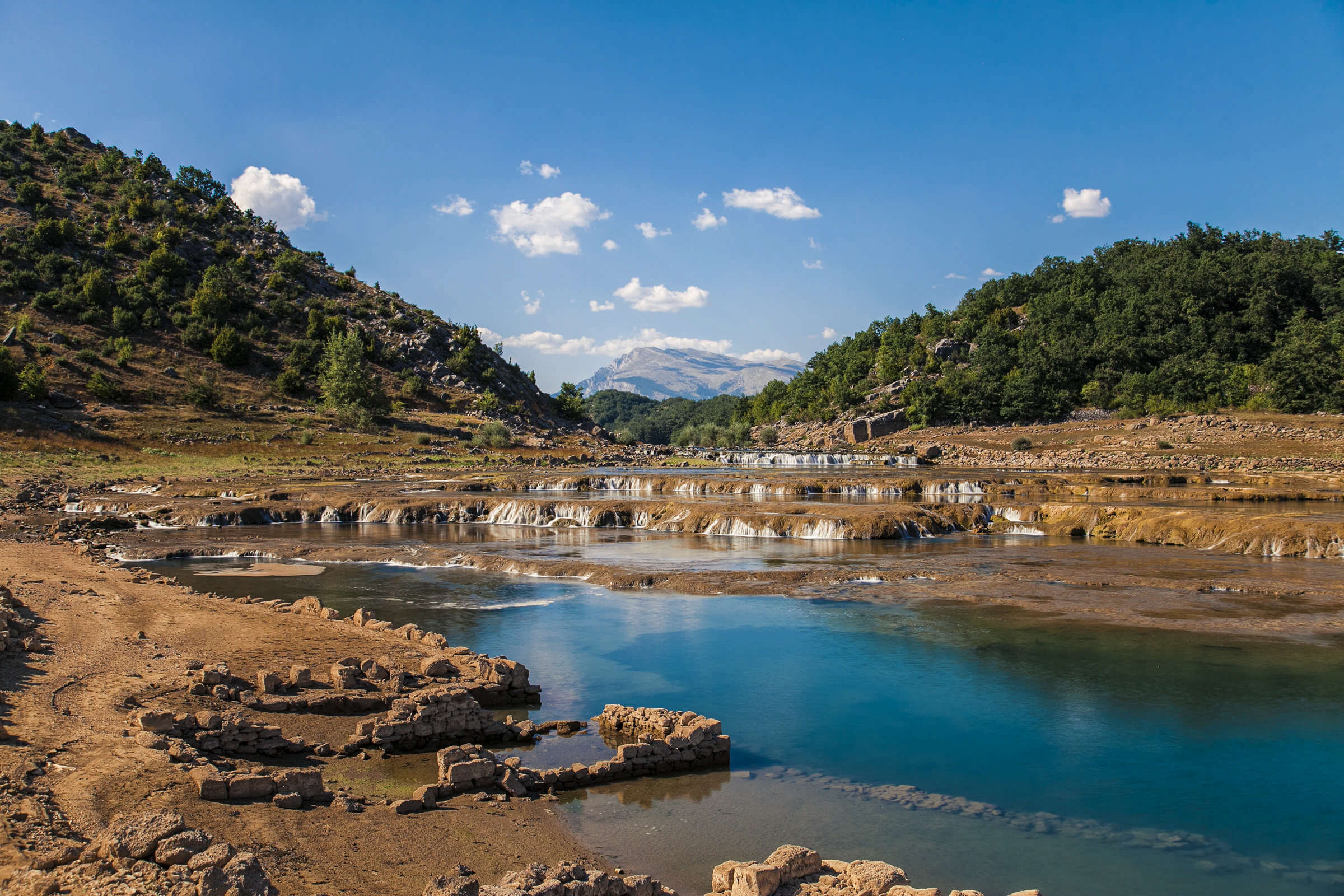 Photo credit: Mario Romulić
Photo credit: Mario Romulić
Gushing under two mountains, the Dinara and Gnjat, and passing through the scenic towns of Sinj, Trilj, Zadvarje, and Omiš where it finally meets the Adriatic Sea, the Cetina River is one of the most beautiful canyons in Croatia and is a famous day trip destination for both locals and tourists. Considered the longest river in Dalmatia with its length of 101km, Cetina is a perfect place for canyoning, zip-lining, freshwater kayaking, and white water rafting. The clear blue water of the Cetina River has been a generous source of clean water and freshwater fish for the people of Dalmatia over the centuries. Thanks to the nymph named Cetina, this beautiful river came to life. According to legend, Cetina desperately dreamed of conceiving a child and was tricked by the sexually ravenous God, Zeus, who promised to bore her an offspring after their union. After many weeks of waiting, Cetina did not get pregnant and upon realizing Zeus' trickery, the heartbroken nymph wept endlessly until her tears formed a river and eventually, the Cetina dried up and turned into stone. The Neolithic people believed that a person who wishes to conceive will be blessed with a baby of good fortune after bathing in the tears of the late demigoddess. There is also another story in Cetina that is historically significant to Croatian people. It is the story of a brave and clever woman who single-handedly defeated a whole Ottoman army - Mila Gojsalić.
In 1530, Ahmed Pasha led a powerful Ottoman army to conquer the Republic of Poljica, now known as the modern-day Omiš. The army terrorised, pillaged, and ravaged the people of this place for a long time, but just before their final attack and Poljica's fall, a young beautiful woman named Mila Gojsalić appeared before the army. According to stories, Mila was very beautiful and her charm easily bewitched Ahmed Pasha who fell right under her spell. Mila pretended to be in love with the leader of the Ottoman army and she ended up sleeping in the leader's tent. That evening, Mila sacrificed her chastity and life for her people. After making sure that Ahmed and his men were asleep, she snuck into the gunpowder storage with a torch and blew up the whole military camp. The powerful blast killed Ahmed Pasha and most of the Ottoman warriors, including the beloved heroine of Poljica. Although some stories claimed that Mila escaped the camp and plunged from the high cliffs down to her death in the river of Cetina.
 Photo credit: By Ivan T. - Own work, CC BY-SA 3.0, https://commons.wikimedia.org/w/index.php?curid=17699310
Photo credit: By Ivan T. - Own work, CC BY-SA 3.0, https://commons.wikimedia.org/w/index.php?curid=17699310
The heroic act of Mila ignited courage from the people of Poljica who began to fought back until every single one of the Ottoman invaders was dead. To honor Mila's sacrifice and bravery, the greatest Croatian sculptor Ivan Meštrović created a statue of her. In the village of Gata, overlooking Cetina and Omiš stands the statue of Mila Gojsalić - a heroine who watches over the people of Omiš day in and day out.
Plitvice Lakes and The Black Queen
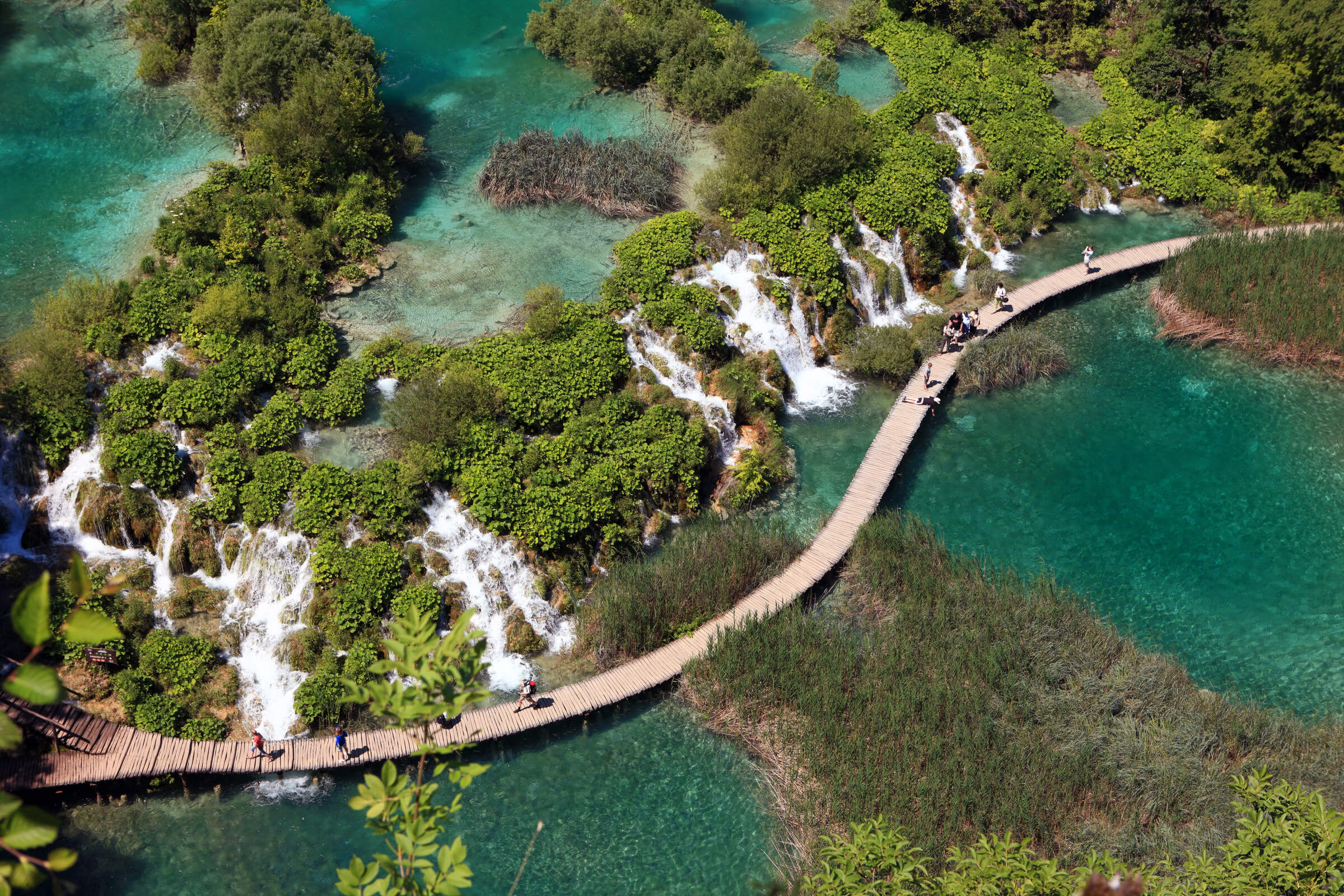 Photo credit: Mario Romulić
Photo credit: Mario Romulić
The Plitvice Lakes National Park is probably the most famous national park in Croatia. Millions of tourists flock to visit this magnificent landscape that is consisted of 16 crystal shades of blue and emerald lakes which are connected by many rivers, streams, caves, and waterfalls and are surrounded by luscious green woodland. This incredible scenery was created by the endless stream of waters that have been flowing over limestones and chalks for thousands of years, until eventually forming natural dams through deposits of travertine barriers. All thanks to nature's wonderful phenomenon, a series of 16 beautiful lakes came to life!
But Croatian folklore, on the other hand, believes that Plitvice Lakes appear magical because it was, indeed, magical. Legend has it that a long time ago, the area of Plitvice only had one source of water - the Black River (Crna Rijeka). Unfortunately, the area was struck with a long-lasting horrible drought which dried out the Black River, and the crops, livestock, and people began dying. In despair, the people prayed and cried all day to the heavens for some rain, but for a very long time, their prayers were left unanswered. They were close to giving up when the Black Queen, who had just left her fairy palace to head to an area near Plitvice, happened to hear their pleas. After witnessing the damage of the drought to the people, the Black Queen said, “I am sad to see that you are suffering!” After that, the winds and thunder started to roar and strong rain came and poured for days and days on end until the Black River overflowed and 13 lakes appeared. People believed that the Black Queen cried for the people's misfortunes and her black and white tears formed the Black River and the White River in Plitvice. Together with the Matica River, they form the first lake and it was named Prošćansko (prošnja = prayer), to commemorate the prayers of the anguished people. For their token of gratitude to the Black Queen, the people of Plitvice built her a castle on the hill above lake Kozjak, where she can admire the splendour of her own creation.
Imotski's Red and Blue Lakes and The Wicked Gavan Family
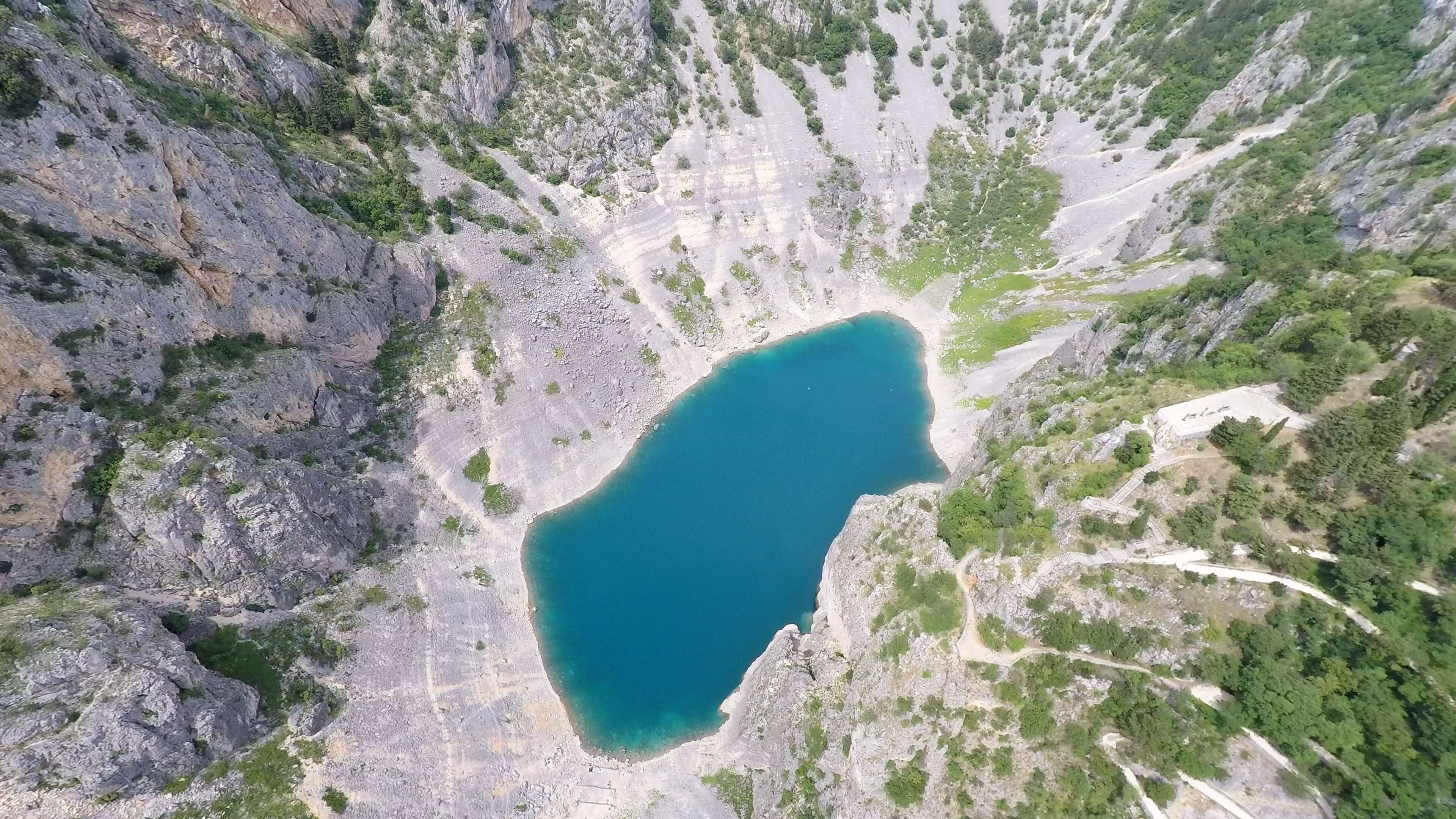 Photo credit: By Yacht Rent from Croatia - modro jezero Croatia, CC BY 2.0, https://commons.wikimedia.org/w/index.php?curid=81974343
Photo credit: By Yacht Rent from Croatia - modro jezero Croatia, CC BY 2.0, https://commons.wikimedia.org/w/index.php?curid=81974343
A small town that is perfect for travellers who wish to steer away from the frenzy of tourists, Imotski is Dalmatia’s hidden gem packed with nature, culture, history, and friendly locals. Unlike the busy coastal cities of Dubrovnik and Split, Imotski possesses a different charm - tucked in the inland region of Dalmatia without the Adriatic Sea, this town, instead, offers an array of unique and breath-taking landscapes to its visitors. Imotski is rigged with incredible karst formations such as hidden caves, sinkholes, karst rivers, lakes, and canyons. The distinctive geographical formations of Imotski inspired countless folk tales including fairies, heroines, and goblins. Perhaps the most famous of these intriguing formations are the Red and Blue Lakes, two magnificent karst lake formations which, according to Croatian folklore, have emerged to swallow the palace and wealth of the wicked Gavan family.
Named after the reddish color of the surrounding cliffs, the Red Lake is a beautiful karst lake and the third largest sinkhole in the world. It can't be reached on foot and without special equipment. Meanwhile, the Blue Lake is easily accessible and is located just beneath the historical Topana Fortress in Imotski. Locals and tourists are welcome to swim in the calm, turquoise blue water of the lake. The stunning and serene blue lake, however, hides a story of the evil Gavan family who used to live in the area of Imotski. According to folklore, Gavan with his wife, Gavanica, and their children, were the wealthiest and most powerful family in Imotski. Nonetheless, the Gavan family was known to be very cruel and vile towards their servants and neighbours and the only thing that mattered to them was their wealth. An angel heard about Gavan’s horrific acts and decided to descend down from heaven to test the Gavan family. The angel disguised as a beggar and knocked on the Gavan's palace door to ask for help. Gavanica opened the door and refused to provide any help to the beggar. The angel then asked Gavanica, “Are you not afraid of God’s punishment?” The arrogant woman replied, “What good can God do for me when I have my Gavan?” It was then that the angel revealed his disguise and punished the Gavan family. It was believed that the ground where the Gavan’s palace stood cracked open and swallowed the Gavans and their entire wealth. The locals still believe that the deep hole, now covered by the Red and Blue Lakes, still contain the palace and wealth of the family and on windy days when the bora wind blows, the screams of Gavan and Gavanica can still be heard around the area of these lakes. The locals also claim that beautiful fairies who live in the Fairy Cave in the Blue Lake have been sighted basking in the beauty of the lake at sunset and dawn. There is a current rumor that no human has ever managed to set foot on the Fairy Cave.
Stories of fairies and foes aside, the Blue Lake transforms into a spectacular football field every few years when it dries up. Many people flock to Imotski to witness these rare and out-of-this-world football matches on Imotski’s mysterious lakebed.
Krka National Park and The Tragic Love Story of Bogdan and Miljeva
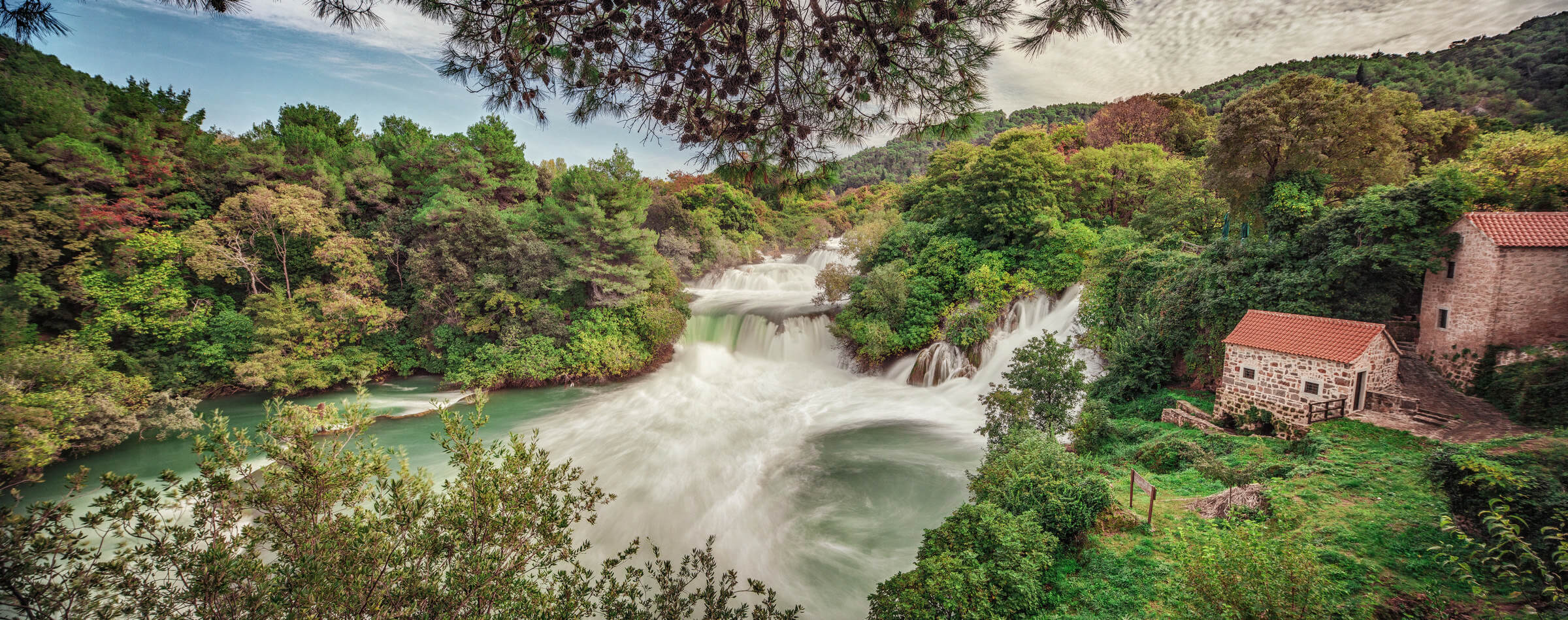 Photo credit: Mario Romulić
Photo credit: Mario Romulić
One of the most visited national parks in Croatia, Krka National Park has it all - the iconic Skradinski Buk waterfall, Neolithic cave, Roman architecture remains, Krka Monastery and so much more! It is also very accessible especially if you are coming from the coastal cities of Split and Šibenik. The park which is filled with dazzling waterfalls, gorges, and the 73km-long Krka river that gushes through a karstic canyon of 200m deep are intertwined by walking paths, hiking trails, and wooden bridges. The park has five main entrances: Skradin, Lozovac, Roški Slap, Krka Monastery, and Burnum, and all are accessible by car. But before becoming Dalmatia’s most famous tourist attraction, Krka National Park is built from the tragic love story of Bogdan and Miljeva.
A long time ago, the mighty Prince Bogoje lived in the area of Krka. In Bogočin, he built a beautiful palace for his son, Bogdan, who was set to marry a lovely noblewoman who lives in the town of Ključ across the river Čikola. That woman’s name was Miljeva and she was the daughter of influential Ban Domagoj and his wife Čika. Bogdan and Miljeva were cherished by the townspeople and on their wedding day, a large gathering of seven bans and twelve county prefects have gathered in Bogočin to witness the union of the beloved couple. The wedding was a success and everyone headed to the palace to celebrate the newlyweds where a tragic fate awaited the couple. During the celebration, a terrifying dragon descended into the party and dragged Princess Miljeva to the bottom of Lake Brljan. Prince Bogdan came to rescue his bride but the beast drew him to the river of Krka as well. This tragedy broke the heart of Prince Bogoje who used up all his wealth to grieve the loss of his son and Miljeva. With his riches, he built Aranđelovac monastery, a place to pray for the souls of the lovers. He also built the towns of Čučevo and Nečven to symbolize the love between Bogdan and Miljeva. In addition, he built two bridges which connect Roški waterfall and river Miljacka. Local folks believed that anyone who wishes to cross the bridges has to shed two tears to pay homage to the tragic fate of Bogdan and Miljeva's love. In the end, Prince Bogoje tore down the Bogočin palace and set off from this grief-stricken town into the unknown. Meanwhile, Miljeva’s mother, Čika, secluded herself to pray for the late lovers in a tower she built in Ključ.
Because of this tragic love story, Bogočin is known by the locals as a “fairy town”, the river near Ključ is named Čikola and the area between Bogočin and Ključ is called Miljevci.
For more on Croatia's top travel destinations, follow Total Croatia.
For more on travel, follow TCN's dedicated page.
For more about Croatia, CLICK HERE.
Edward Bernays Offering Education for All Croatian Politicians
July the 28th, 2021 - Edward Bernays is offering education for all Croatian politicians in an attempt to recognise the need for education in modern democracies and to try to restore at least some public faith in politicians.
As Poslovni Dnevnik/Darko Bicak writes, a proper education is one of the fundamental pillars of a modern democratic society and a condition for its economic and social development. Over recent years, there has been a growing awareness of the need for lifelong learning in all segments of society, including in politics.
Recent political elections have shown that it is becoming increasingly important to voters who exactly the candidates are, what qualities they possess, what their life and professional path is, what they stand for, and less and less which party they belong to, which is a big change for Croatia.
New options appear on the scene and sometimes voters go with them in an attempt to break out of the normal political routines in Croatia. However, even with the true good will to do something positive, they lack knowledge about the functioning of the political system, the ways of making decisions, management in politics, and the proper ways of communicating with target audiences. Therefore, they disappear very quickly and we're constantly looking for something and someone new.
This was the reason why Edward Bernays University College in Zagreb decided to create an interdisciplinary lifelong learning programme that offers Croatian politicians and those in that world all of the knowledge necessary for political action in one place.
As explained by doc. dr. sc. Damir Jugo, Dean of Edward Bernays University College, the Political Academy programme is intended for politically active or engaged individuals at all levels of national, local and regional policy who have the desire and need to upgrade their political competencies, knowledge, skills and experience in the programme.
"We expect interest among mayors, prefects, heads of local government units, members of parliament, presidents of city councils and districts, but also all other actors in political life in Croatia. I believe that people will also welcome this kind of investment from Croatian politicians in their personal and professional development, which, as a universal education of this type, is a novelty on the market.
We mustn't neglect the arrival of new generations of Croatian politicians who to some extent have no real concrete political experience, but have the desire and energy that they would like to politically capitalise on - such a programme gives them the opportunity to fill that gap,'' said Jugo.
He added that during the development of the programme, they were guided by the fact that it enables participants to acquire the necessary knowledge to take quality political action in one place. It can all be adapted to the Croatian political environment, be practical and applicable in political activities, to be inclusive and open to all participants and their political preferences and party colours, and participants can be guided through the programme by lecturers who, in addition to theoretical knowledge, also have practical experience gained in managing political processes, advising political actors or analysing the Croatian and international political scene.
At Bernays, they emphasise that the key feature of the programme, ie its lecturers, is that they come from different political scenes, which gives the programme additional breadth, and enables Croatian politicians partaking to acquire all of the practical knowledge they might need from lecturers from different political spectrums.
Such a license to engage in public affairs is mandatory in many countries around the world, and the most famous is the Ecole National d'Administration (ENA), whose students are responsible for implementing public policies in France.
Jugo explains that such a practice is not only recognised in France, but, globally, and across many developed countries.
"I think that current trends are heading in that direction, but I must point out that specific policy areas have already recognised the importance of the specialised education of new staff, so there are, for example, the Diplomatic Academy and the School of Public Administration. But I believe that the need for comprehensive education for political action will emerge over time, and I'm convinced that all parties on the political spectrum could agree on that.
In the case of Bernays' Political Academy, it isn't a license, but an informal interdisciplinary programme of lifelong learning, upon the completion of which participants obtain a certificate,'' explained Jugo.
As part of the programme from this Political Academy, all relevant topics related to political action will be addressed, including the topic of transparency in political action.
"Transparency in decision-making and planning, financial transparency, digitalisation, all these are the topics of the module which aims to educate students about the knowledge and skills they will be able to act upon. If the system or person is transparent, the chances of conflict of interest and corruption are minimal,'' said Jugo when asked how they intend to educate public officials and Croatian politicians about the biggest problem on the Croatian political scene in the past 30 years - corruption and conflict of interest.
The programme lasts 120 hours and is implemented through 10 modules over a period of three months. The training covers: political management, political process management, strategic leadership, image management and personal branding, advanced communication skills, public appearances, communication with the media and media appearances, diplomatic protocol and political behaviour, and the organisation and proper management of political campaigns.
Bernays emphasises that the biggest advantage of the Political Academy programme is that the lecturers all have very rich political experience, and at the same time they come from different political options, which gives the programme more breadth and additional quality. Jugo is convinced that the Bernays' Political Academy will contribute to improving the quality of political activity in Croatia, and that in the future a new generation of individuals will restore confidence in politics and Croatian politicians themselves.
For more, follow our politics section.
Osijek PLANtaza Association Gives Eastern Croatian City New, Positive Shine
July the 28th, 2021 - The Osijek PLANtaza Association (Udruga) has, for seven whole years now, been breathing life and positivity back into that Eastern Croatian city.
As Poslovni Dnevnik/Lucija Spiljak writes, associations form an important tool in community development, but also in encouraging the empowerment of individuals through volunteer or work experience, given that in Croatia, associations are often both employers and creators of new content.
''They shouldn't be underestimated, and they should be given concrete support and encourage their development,'' stated Darija Walter, president of the Osijek PLANtaza Association, which was founded back in 2014 by a group of enthusiasts with the desire to start positive stories in their often overlooked city.
From the very beginning, they have been focused on promoting a sustainable way of life, ecology, creativity and art, as well as engaging in socially responsible business, thus reviving the small but very strong and creative Osijek scene.
The Osijek PLANtaza Association currently boasts 40 members, half of whom are active, and on the eve of their seventh birthday, they have more than 140 implemented projects and activities under their belt, they also continue to cooperate with a large number of civil society organisations, creative individuals and entrepreneurs, and strengthen their own forces with new members.
Urban interventions in Osijek
Darija says that the first projects of the Osijek PLANtaza Association were various creative and ecological workshops, the ReArt festival and the Papergirl project, which they adapted to their needs and created a new concept of event/socialising with an emphasis placed primarily on exchanging creativity in different locations.
When they founded the association, they were supported by several other existing Osijek associations - the Shine Dance Studio, the Slama Association and the Slap Creative Development Association - with which they still cooperate and continue to launch new projects, but the cooperation has expanded beyond Osijek and even beyond Croatian borders. An example of that is the Vucedol Interreg project, which they;re currently implementing with partners from Budapest and Pecs (Hungary), as well as the Museum of Vucedol Culture (Croatia).
“Cross-border cooperation on the Interreg project will only further strengthen our capacities and give us a spring in our steps for some new ideas, especially with organisations that share our views on doing responsible business and having a sustainable view of the future. Fortunately, more and more individuals are launching healthy and sustainable stories through actions via associations or independently on the development of a sustainable lifestyle that is now, more than ever, needed because of the possible challenges we as humanity are facing and will face.
We've recently been developing projects that are directly related to the development of tourism potential, especially in terms of the development of urban culture, such as the Urban Intervention project. The project includes several activities aimed at reviving forgotten and abandoned buildings.
It's aimed at questioning spatial relationships through a combination of architecture and street art and the interaction of the renovated buildings and the local community. The best example of this is the oldest tram station in Osijek, built back in 1926, which became an open-air gallery with the Urban Intervention project, within which three academic artists have presented themselves so far.
Urban interventions have triggered a continuity of creative changes in space such as outdoor galleries, mosaics, painted benches or power boxes. These may be small things, but they also require organisation and a detailed implementation plan. Educational projects such as the Green School and the MOSS project (mobile solar station) have so far been successfully implemented in 11 primary schools throughout the City of Osijek.
Our first EU Golden Year project aims to achieve cooperation with the pensioners of the City of Osijek through the implementation of 200 activities, social and intergenerational programmes, and our good cooperation with partners will only further enrich the lives of pensioners who need special support due to the situation caused by ongoing coronavirus pandemic.
We've also launched some new projects such as Take Care of the Mask, My Opportunity and Urban Osijek, which we believe will achieve its results and leave a good mark on the the City of Osijek and the wider county,'' stated Darija.
Excellent cooperation with young people
The goal of the Zbrini project is to advocate for a city without disposable plastic, the My Opportunity project should further empower young people in terms of mobility and participation in Erasmus programmes, while the Green School project will introduce students from five primary schools to young farmers and permaculture food farming.
Darija believes that the consciousness of individuals began to change for the better after the pandemic struck, but that at the same time, the consciousness of the business and public sector is waking up too. New generations understand the benefits of renewable energy much better, and the awareness of young people, as Darija says, is most evident through the implementation of the MOSS project.
“Students and young people want to be involved in project activities and so far we've enjoyed some very nice collaborations, especially in schools that conduct civic education as an elective subject. We try to offer interesting and creative solutions to the youngest in our society through educational programmes, because that's the only way we can expect better generations to come after ours,'' stated Darija, adding that the Osijek PLANtaza Association's cooperation with local authorities is decent enough, but that it could be better, especially in terms of more concrete communication.
The Osijek PLANtaza Association is currently implementing the activities of the EU Golden Year project, and will participate in the Osijek Summer Night, where they will organise a Dance for pensioners along with numerous other events. They also carry out programmes of emotional development and planting a therapeutic garden in the yard of the local retirement home, outdoor exercises, and even computer literacy workshops.
"In any case, we have a working summer and autumn ahead of us, as well as a celebration of our seventh birthday, which we hope will be possible," concluded Darija Walter.
For more, follow Made in Croatia.
Croatian-Slovenian Fund to Spend Millions on Linking Tech and Business
July the 28th, 2021 - A Croatian-Slovenian fund has secured a massive forty million euros and plans to pump it directly into connecting the technology sector with the business one.
As Ana Blaskovic/Poslovni Dnevnik writes, the Croatian Bank for Reconstruction and Development (HBOR), the European Investment Fund and the Slovenian Export and Development Bank (SID) is establishing a Croatian-Slovenian fund/platform to finance the commercialisation of technological and scientific solutions from universities, research institutes and value centres from the two neighbouring countries.
The agreement on the establishment of a regional platform for technology transfer was signed in the Slovenian capital city of Ljubljana on Monday, and the value is estimated to stand at at least 40 million euros. The platform will be financed by the Croatian and Slovenian development banks, each with 10 million, and the EIF with an additional 20 million euros.
The money from this Croatian-Slovenian fund will be invested in the establishment of a regional fund for technology transfer, ie a venture capital fund. The money is intended for projects developed by both Croatian and Slovenian universities, research institutes and centres in the so-called ''proof of concept'' phase.
At least 15 million euros will be spent on entirely Croatian projects, and the EIF estimates that more than 350 patents and 100 spin-off companies that could be funded through the fund will be applied in a period of just five years.
"Croatia isn't lagging behind in the development of patents and new solutions, but it is lagging behind in their application within the economy. The Croatian and Slovenian markets lack a link in financing due to which many valuable patents and technological solutions never experience commercialisation. This is the most risky form of investment, so private capital is rarely invested in such projects. Our role is to compensate for this shortcoming and enable a strong link between science and entrepreneurship,'' said the head of HBOR, Tamara Perko.
"This is one of the most important days for Slovenian and Croatian scientists since Slovenia and Croatia both became independent nations," added Igor Emri, head of the department at the Faculty of Mechanical Engineering at the University of Ljubljana.
For more, follow our dedicated business section.
900,000 Tourists in Country - Croatian Coastal Destinations Popular
July the 28th, 2021 - There are currently 900,000 tourists staying in various locations across the country as the traditionally popular month of August approaches, with Croatian coastal destinations proving the most popular of all.
The ongoing coronavirus pandemic remains a threat to tourist seasons across the Mediterranean, but with the vaccination rollout making things easier, tourists are moving around more easily and bringing the hope of a better tourist season than that of summer 2020 to Croatia's shores.
As Poslovni Dnevnik writes, according to the first data from the Croatian eVisitor system, there are currently more than 900,000 tourists staying across the Republic of Croatia. Most of them are holidaying in Croatian coastal destinations in Istria, Kvarner and further south in Split-Dalmatia and Zadar counties.
Looking at Croatian coastal destinations which are of course the most popular at the moment, most guests are staying in Rovinj, Vir, Porec, Medulin, Umag and Mali Losinj. Most of them have come from Germany, Slovenia, Poland, Austria and the Czech Republic, reports HRT.
Last weekend, there were 448,000 arrivals and 2.7 million overnight stays recorded, which marks a 20 percent increase when compared to the same weekend last year. Compared to that same weekend record back in pre-pandemic 2019, there have been 24 percent fewer arrivals and 18 percent less overnight stays.
During the weekend, almost 843 thousand vehicles were recorded on Croatian motorways and 46 and a half million kuna in tolls were collected.
When compared to the same weekend last year, vehicle traffic has very encouragingly increased by 39 percent, and the amount of tolls collected has increased by 41 percent. Compared to the same weekend of the record 2019, vehicle traffic is down by 3 percent, while the amount of toll fees collected is down 8 percent.
For more on Croatian tourism and destinations that you might want to pay a visit to in the near future, make sure to follow our dedicated travel section.



